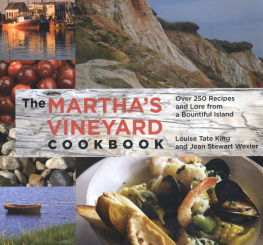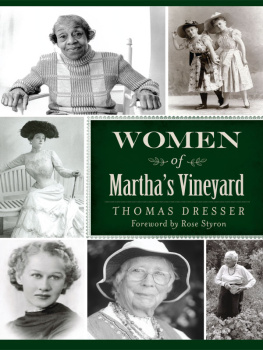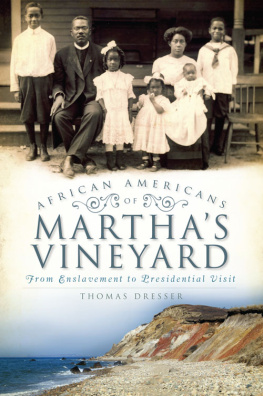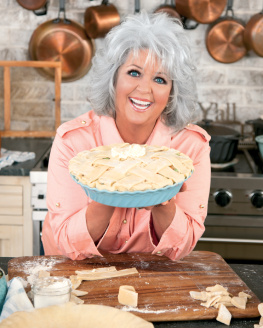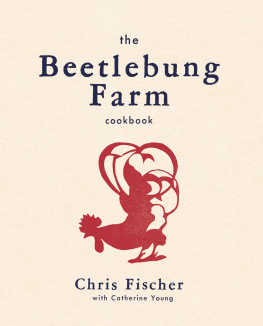ACKNOWLEDGMENTS
I could not have assembled this fourth edition of The Marthas Vineyard Cookbook without once more having my friend and neighbor Linda McGuire as my collaborator. I wont take the space Id need to list all the ways in which she was indispensable. Ill only say they were multiple.
We were both pleased to have Louise Tate Kings daughter Hilary as an associate this time. Though she now lives in California, she grew up on the Vineyard and provided us with several recipes and anecdotes remembered from her childhood. As a teenager, she spent several summers working as the chef in her mothers West Tisbury restaurant, which was also their home. In later years she was the chef at her fathers Chilmark inn for two seasons.
To both of them, many thanks and immense gratitude.
Jean Stewart Wexler
EPILOGUE
T he busy excitement of summer with all its seasonal delights is over. Now the narrow Up-Island roads are largely traveled by big all-terrain vehicles and zippy little Jeeps carrying the gear-laden, rubber-booted fishermen who converge on Marthas Vineyard every fall from mid-September to mid-October for the annual Bass and Bluefish Derby.
So the Island really doesnt come back into its own until early November. By then most of the SALE signs in shop windows have been replaced by CLOSED ones. Many of the huge, multi-windowed houses in Oak Bluffs stand shuttered and empty, NO TRESPASSING signs have been pounded into lawns; locked chains and closed gates keep out the curious. The summer visitors have gone. A few bright leaves and an occasional scarlet or orange one still brighten woodland paths, but the autumnal gales will soon strip them off and leave the trees black and bare against the sky until the first greenery appears on their skeletons next spring.
Out at Squibnocket, the shingle rolls over the beach with each incoming tide and begins covering the summer sand. The only sounds besides the rhythmic wash of the small stones and the cries of the gulls is the occasional plop of a few handfuls of sand, as little by little the precious, coveted sea cliffs of Marthas Vineyard erode in the wet wind and the slashing rains, drop to the beach, and wash away forever into the sea. The Island is disappearing.
But for the time beingand one hopes for the rest of our timethe Vineyard is safe, at least from a geological standpoint. The radical changes that are beginning to occur are being brought about not by the sea, but by the wealthy would-be residents who are determined to have homes here at whatever cost to themselves, but also, sadly, at whatever cost to the Islands environment. Fifty years ago, a sandy road through the woods often terminated with a stunning vista of a salt meadow, marshes, a pond, dunes, a sandy beach, and the sea. Now, turning onto the same road, you are likely to encounter house after house where the trees have been bulldozed out and replaced with tidily kept, well-landscaped yards, and nearer the ocean therell be one or two multimillion-dollar houses, many occupied only a few weeks a year. Much of the scenes natural beauty has been marred forever.
Yet, come late fall, a few wild grapes, rum cherries, beach plums, rose hips, and other native fruits still cling to their vines and bushes in the thickets and on the moors and dunes as they have since pre-colonial times, and way before that. Schools of tinker mackerel and pollock swarm in and out of the Great Ponds with the tides. The fat black-faced Canada geese settle on Donnie Millss stripped cornfields beside the tattered scarecrows to glean the last kernels of corn; restless, they take off again and circle aimlessly over West Tisbury in a loose V, then head for Chilmark and the Keith meadow and pond, debating noisily en route whether to migrate or to count on being fed all winter on the Island.
The opulence of fall fades, and the people and creatures who live on the Vineyard and the plants and trees that grow on it prepare for the short, cold days of winter. For Marthas Vineyard is not mainly a summer place, but a place to be born and grow up, a place to live and work and thrive year-round, nourished by the bounty its soil and shore offer to those who are provident enough to seek and use it.
Chowder, if built with due respect for both clock and calendar, improves with age. In many chowder recipes one encounters the phrase remove to back of stove, and there is a good deal of eloquence there. On the back of the stove is where much of the perfection comes in.
Vineyard Gazette
T he word chowder probably derives from the French word chaudire, meaning an iron pot. On their native islands of Guernsey and Jersey, the Channel Islanders who settled along the north shore of Massachusetts more than 300 years ago had long combined food from the sea with the rich milk from their cows in the iron pots they used for cooking. Other settlers in the new land, after sampling this delightful combination, soon were concocting chowders from whatever base they had at hand, applying the resourcefulness and ingenuity long identified with the New England housewife. Besides all types of seafoodfish, clams, lobsters, scallops, shrimp, oysters, and eelschicken, beefsteak, corn, potatoes, parsnips, even eggs went into the pot with the bread, onions, and milk. Tomatoes, however, used instead of milk in the chowders made farther south, have always remained anathema in the chowders of New England.
In early days corn was the staple of the Vineyard diet through the winterbound months, and early chowders were a thin corn gruel to which was added fish, eels, shellfish, or some sort of meat. Potatoes in place of bread, now traditional in the chowders of Marthas Vineyard, are said to have been introduced by one John Pease, who came from Salem, Massachusetts, to settle in Edgartown around 1656. He had eaten potatoes in the Virginia colony, and one lean fall, when Vineyard grain crops had been devastated by flocks of wild fowl (probably wild pigeons), he begged a few potatoes from the trading vessels that moved along the eastern coast and tried them in his chowderwith historic results. Later, salt pork was added to fill out and enrich the chowders when clams were poor in flavor; it too became traditional. On the Vineyard, the browned bits of salt pork are often left in the finished chowder as they were 300 years ago, not removed as they usually are in mainland chowders.
Chowders, like stews and other dishes developed when cooking was a pleasurable and time-consuming art, do need to be built with care and allowed time to mellow. Vineyard housekeepers, working in the same houses or homesites as their whaling-wife or Wampanoag (the Indian tribe native to the Vineyard, a branch of the Algonquians) ancestors, today use blenders, electric stoves, and freezers to prepare and preserve their chowders. But, to quote a letter written by the grandmother of a present-day West Tisbury cook, chowder is still better the second day than the first, and the third day than the second, if it lasts that long.
There are many chowders, all structured the same way. We have included only the ones that we consider most indigenous to the Island. Following the procedures detailed in the Basic Recipe on page 4, you can concoct your own. Or see what you can produce from this list for a salt-pork chowder, taken from the recipe book of a Boston Housekeeper of 1854: salt pork, onions, sweet herbs, fresh sliced cod, biscuits, Madeira wine, Jamaican pepper, stewed mushrooms, oysters, and truffles. With this, we leave you on your own!

